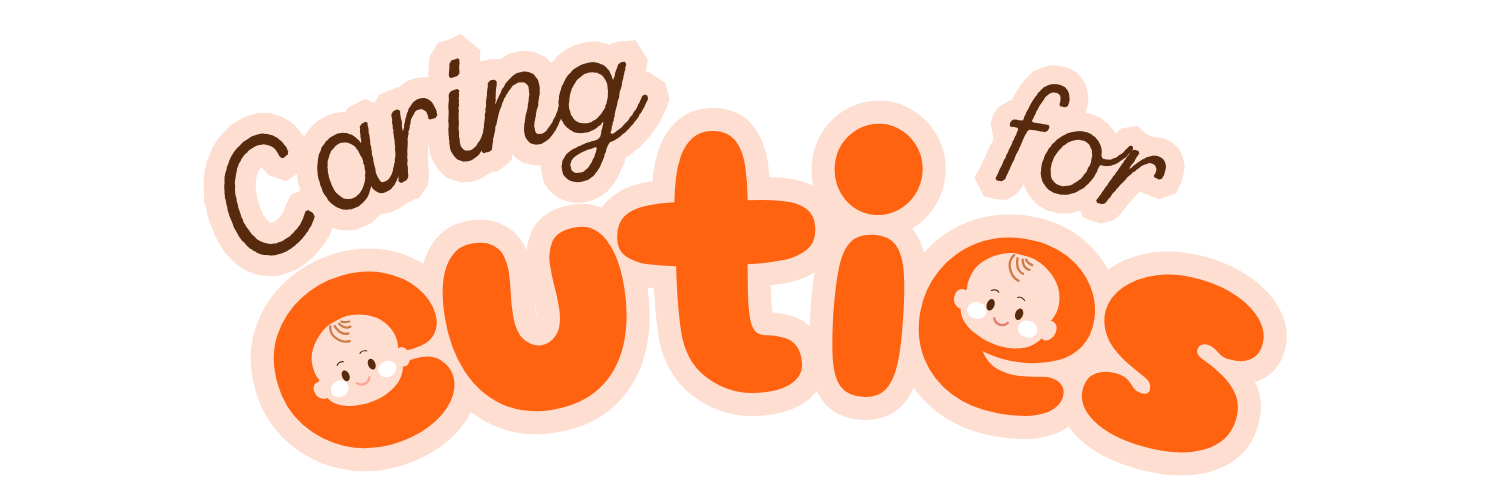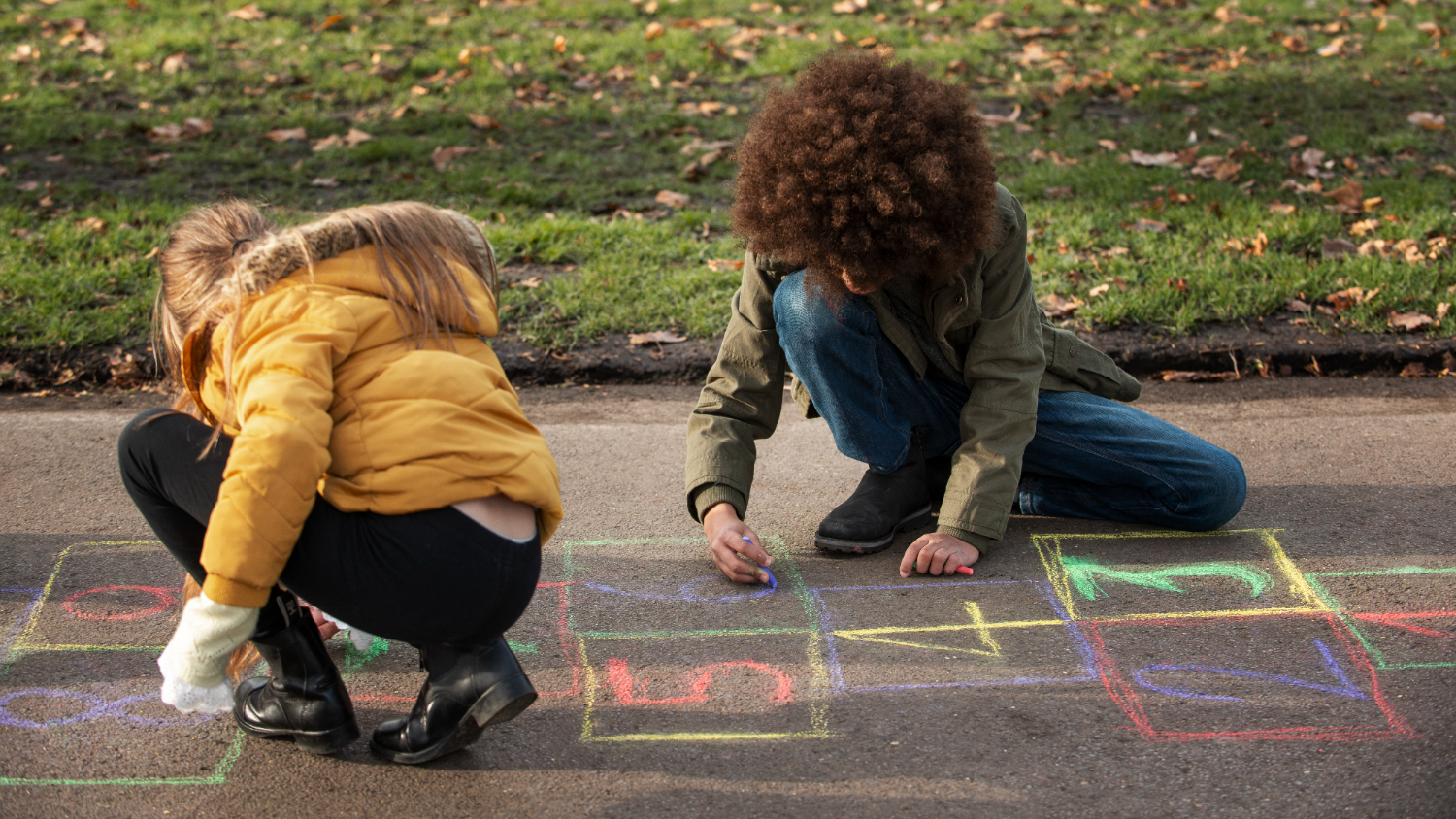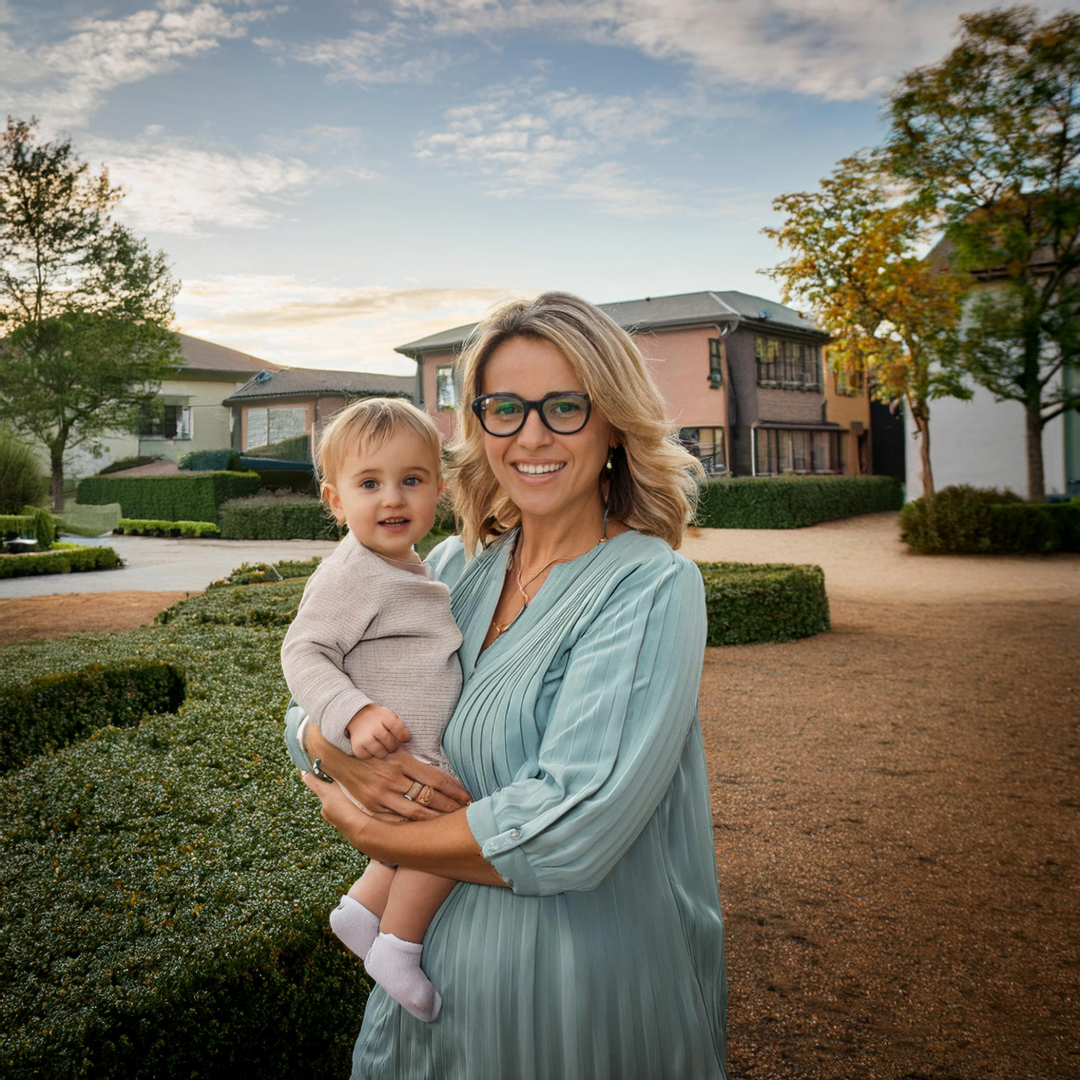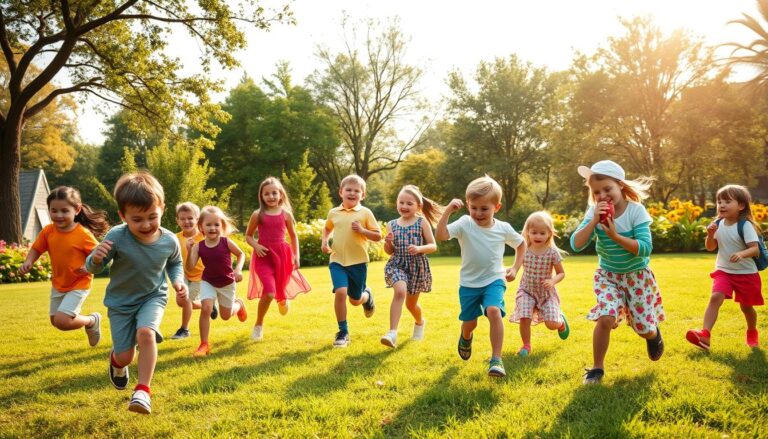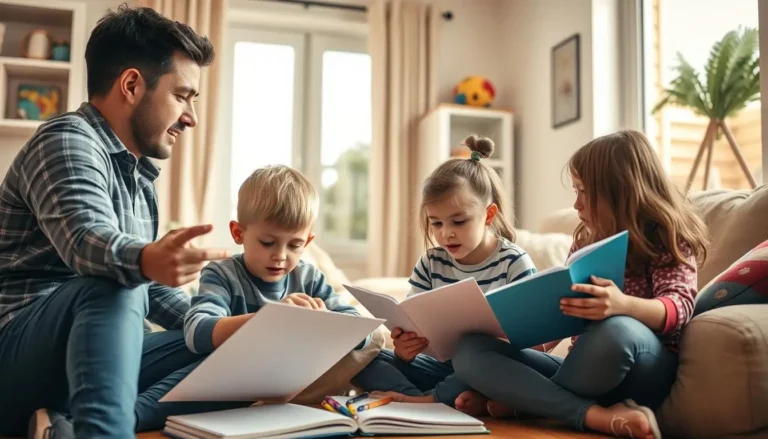What if the best way to boost learning, creativity, and fun for kids didn’t cost a thing? There are many school-age play activities, educational games, and outdoor ideas that are both fun and free. This makes us wonder: can free play activities really give kids a great play experience that helps them grow?
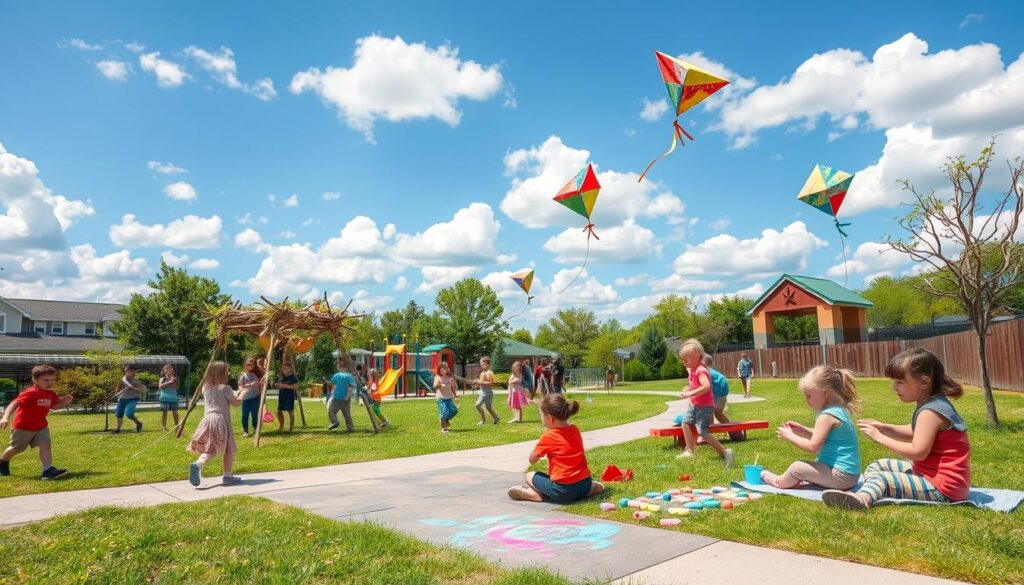
Key Takeaways
- Cost-free school-age play activities can be just as effective as paid ones
- Outdoor play ideas and educational games promote active learning and creativity
- School-age play activities support cognitive, social, and emotional development
- Parents and caregivers can provide a well-rounded play experience without spending money
- Cost-free play activities can be adapted to suit different ages and interests
- Encouraging cost-free play can help reduce financial stress on families
Understanding the Value of Cost-Free School-Age Play Activities
Cost-free school-age play activities are key for kids’ growth. They include indoor play activities that let kids show who they are, learn new things, and make friends. By adding creative play for kids to their day, parents and caregivers spark their imagination and curiosity.
Cost-free play has many benefits:
- It boosts thinking skills through solving problems and thinking critically.
- It grows creativity and imagination.
- It helps kids get better at social skills by interacting with others.
- It increases physical activity through after-school activities.
By giving kids chances to play for free, parents and caregivers help them learn important life skills without spending a lot. This way, kids learn to be creative and find fun without needing expensive toys or gadgets.
As kids play for free, they start to feel more independent and self-reliant. This helps build their confidence and self-esteem. It lets them face new challenges and follow their interests with excitement.
Storytelling Theater and Drama Games
Storytelling theater and drama games are great for fun learning activities. They help school-age kids learn and grow. Kids can improve their language skills, feel more confident, and use their imagination.
Here are some play-based learning ideas for storytelling and drama:
- Creating a puppet show to retell a favorite story
- Acting out a scene from a book or movie
- Improvising a story together as a group
These activities can happen in classrooms, homes, or community centers. They can be tailored to fit what kids like and need. By doing these fun learning activities, kids can develop a lifelong love of learning.
Using play-based learning helps kids learn important skills. They get better at being creative, thinking critically, and solving problems. It also helps with social and emotional growth.
| Activity | Benefits |
|---|---|
| Storytelling | Develops language skills, builds confidence, and enhances imagination |
| Drama games | Promotes social and emotional development, encourages creativity and critical thinking |
Nature Exploration and Outdoor Discovery
Nature exploration and outdoor discovery are key for school-age kids. Outdoor play ideas, like backyard science adventures, boost their scientific knowledge. They also spark curiosity. Kids can observe plants and wildlife, collecting leaves and rocks to feel wonder and awe.
Backyard Science Adventures
Backyard science adventures are great for outdoor play. Kids can make a bird feeder, create a sundial, and watch plants grow. These activities teach science and critical thinking in a fun way.
Plant and Wildlife Observation
Observing plants and wildlife is a top outdoor play idea. Kids can watch different plants and animals in their backyard or park. This sharpens their observation skills and teaches them about conservation.
Using tools like binoculars and field guides makes these activities more fun and educational.
Indoor Physical Movement Games
Indoor play activities are great for kids to move around and be creative. They can be part of a child’s daily routine. This makes learning fun and engaging. Examples include dancing, jumping jacks, and balance beams.
Setting up a mini obstacle course with couch cushions and chairs is a fun idea. It encourages kids to play creatively while staying active. Adding music and games like Simon Says or Freeze Dance makes it even more exciting.
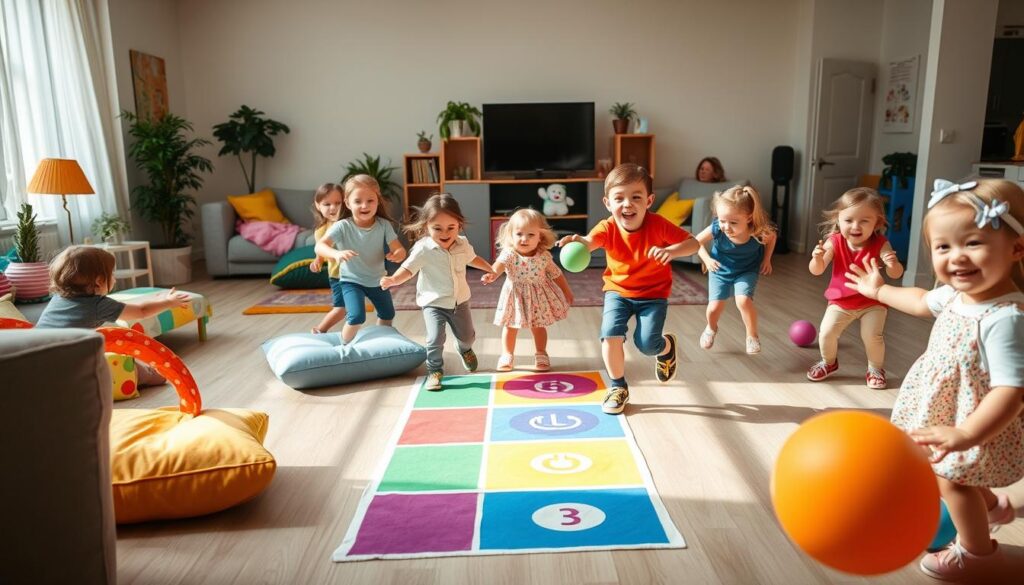
- Yoga or tai chi for kids
- Indoor bowling or balloon volleyball
- Follow the leader or animal moves
These activities boost physical fitness, coordination, and balance. They also foster creative play and self-expression.
| Activity | Age Group | Benefits |
|---|---|---|
| Dancing | 5-12 years | Improves coordination and balance |
| Obstacle course | 6-12 years | Develops problem-solving skills and physical fitness |
| Music and movement games | 4-10 years | Enhances creativity and self-expression |
By playing indoor movement games, kids can improve their physical skills. They also build confidence and stay fit. All while having fun and being creative.
Creative Writing and Poetry Adventures
Engaging in creative writing and poetry is great for school-age kids. It can be part of educational games and after-school fun. This way, kids can improve their language skills and creativity.
Examples include story creation exercises and word game variations. Kids can make their own stories and poems. They can also play word searches and crosswords to learn in a fun way.
These activities suit different learning styles and abilities. Group writing helps kids work together, while solo writing boosts critical thinking. By adding creative writing to learning, kids can grow to love learning and do well in school.
- Story creation exercises to develop imagination and creativity
- Word game variations to make learning more engaging and fun
- Group writing activities to encourage collaboration and teamwork
Offering creative writing and poetry adventures helps kids love learning. These activities are great for any educational program. They can be adjusted to meet various learning needs.
DIY Art Projects Using Household Items
Engaging in creative play for kids is key for their growth. DIY art projects with household items are a great way to support play-based learning. They let kids show their imagination and creativity while improving their fine motor skills.
Some ideas for DIY art projects include:
- Creating collages using old magazines and glue
- Making paintings using watercolors and food coloring
- Building sculptures using cardboard and clay
These projects are perfect forchildren’s playtime. They encourage creativity, self-expression, and fun.
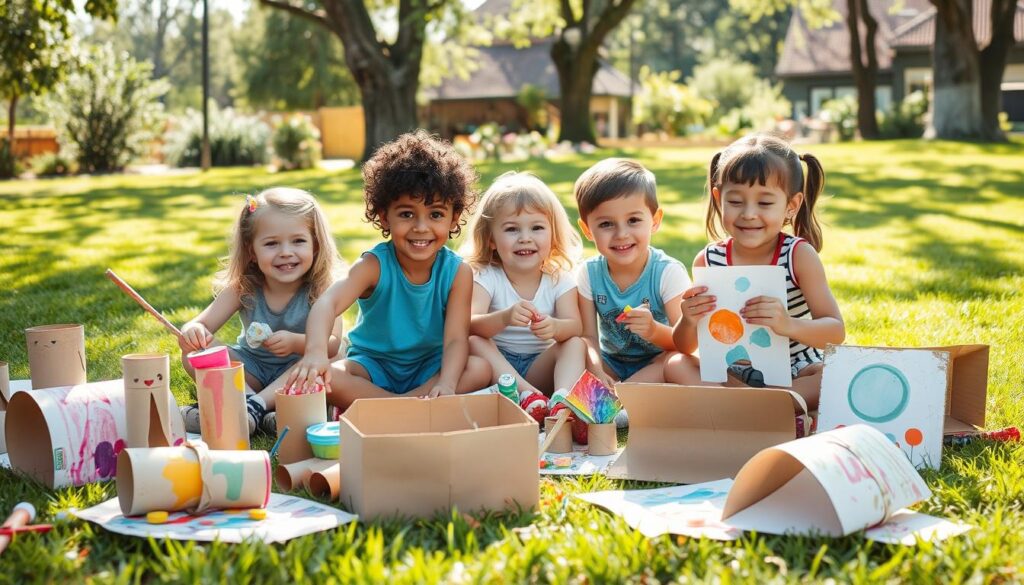
By adding DIY art projects to their daily routine, parents can make learning fun and engaging. This method of play-based learning helps kids solve problems, improve hand-eye coordination, and think critically.
Mathematical Games and Problem-Solving Challenges
Playing mathematical games and solving problems is key for school-age kids. These activities boost their math skills, problem-solving, and thinking. Games like number patterns can be played inside or outside, making them perfect for daily play.
Indoor games like geometry through play also help with math skills. Kids can use objects to make shapes and patterns. For instance, blocks or puzzle pieces can help them learn geometry, improving their problem-solving.
Counting games and competitions are also great for math skills. They can be played inside or outside and fit different ages and abilities. By mixing educational games, outdoor, and indoor activities, parents can help kids love learning math.
- Number pattern activities
- Geometry through play
- Counting games and competitions
Offering kids various math games and challenges helps them build a strong math base. It also supports their overall growth.
Building and Engineering with Recyclables
Play-based learning is key for kids’ growth. Using recyclables to build and engineer is fun and educational. It boosts creativity, problem-solving, and enjoyment in school-age kids.
During play, kids improve their spatial awareness and critical thinking. They also grow their creativity. Playtime with recyclables helps develop their cognitive and motor skills.
Construction Challenges
Construction challenges are great for building skills. They test kids’ problem-solving, hand-eye coordination, and creativity. For instance, building a bridge with recyclables teaches critical thinking and creativity.
Simple Machine Projects
Simple machine projects teach kids about mechanics. They learn about levers, pulleys, and gears. Using cardboard, scissors, and glue, kids make simple machines.
This enhances their understanding of mechanics and play-based learning.
Architectural Activities
Architectural activities boost building and engineering skills. Kids design and build models of buildings and bridges. They use blocks, LEGO, or magnetic tiles.
These activities improve spatial awareness, critical thinking, and creativity. They also teach about play-based learning and children’s playtime.
Recap
Discovering engaging and cost-free school-age play activities can significantly enhance children’s learning and creativity. These activities, such as storytelling, outdoor exploration, and DIY art projects, promote cognitive, social, and emotional development without financial strain. By encouraging kids to participate in these enriching experiences, parents and caregivers can foster independence and problem-solving skills, ensuring a well-rounded play experience that supports growth and learning.
Conclusion: Embracing the Power of No-Cost Play in Child Development
School-age play activities that don’t cost anything can really help kids grow. They can learn, be creative, and have fun without spending a lot. This way, families save money and kids learn important skills.
Activities like telling stories, exploring nature, or making art at home are very valuable. They let kids learn, try new things, and express themselves. This helps them grow in many ways, preparing them for school and life.
Let’s keep supporting no-cost play for kids. It’s key to a happy, well-rounded childhood. By encouraging kids to learn and discover through fun, free activities, we help them reach their full abilities. And we make memories that last a lifetime.
FAQ
What are some cost-free school-age play activities?
Cost-free play activities for school-age kids include storytelling and drama games. They also enjoy nature exploration and outdoor discovery. Indoor games that get them moving are great too.
Creative writing and poetry are fun. DIY art projects with household items are also a hit. Plus, math games and building with recyclables are engaging.
What are the benefits of zero-cost school-age play activities?
Zero-cost play activities boost learning, creativity, and fun for kids. They support cognitive, social, and emotional growth. And, they’re affordable, making them accessible to all.
How can free play enhance learning for school-age children?
Free play lets kids explore their interests and develop creativity. It builds problem-solving skills. Through play, they learn by doing, gaining a deeper understanding of what they’re studying.
What are some examples of backyard science adventures?
Backyard science adventures include watching plants and wildlife. Kids can collect natural materials and do simple experiments. These activities spark their scientific curiosity and knowledge.
How can indoor physical movement games promote physical activity and creativity?
Indoor games get kids moving and boost their confidence. They enhance physical fitness and encourage imagination. Kids learn to solve problems creatively, making movement fun.
What are some examples of creative writing and poetry adventures for school-age children?
Creative writing and poetry adventures include making up stories and playing word games. Group writing activities are also fun. These activities improve language skills and creativity.
How can DIY art projects using household items promote creativity and self-expression?
DIY art projects let kids explore materials and techniques. They develop fine motor skills and imagination. These activities boost creativity and self-expression.
What are some examples of mathematical games and problem-solving challenges for school-age children?
Math games and challenges include number patterns and geometry games. Counting competitions are also fun. These activities improve math skills and critical thinking.
How can building and engineering with recyclables promote creativity and problem-solving?
Building with recyclables challenges kids to think creatively. They work on construction, simple machines, and architecture. These activities enhance spatial awareness and critical thinking.
